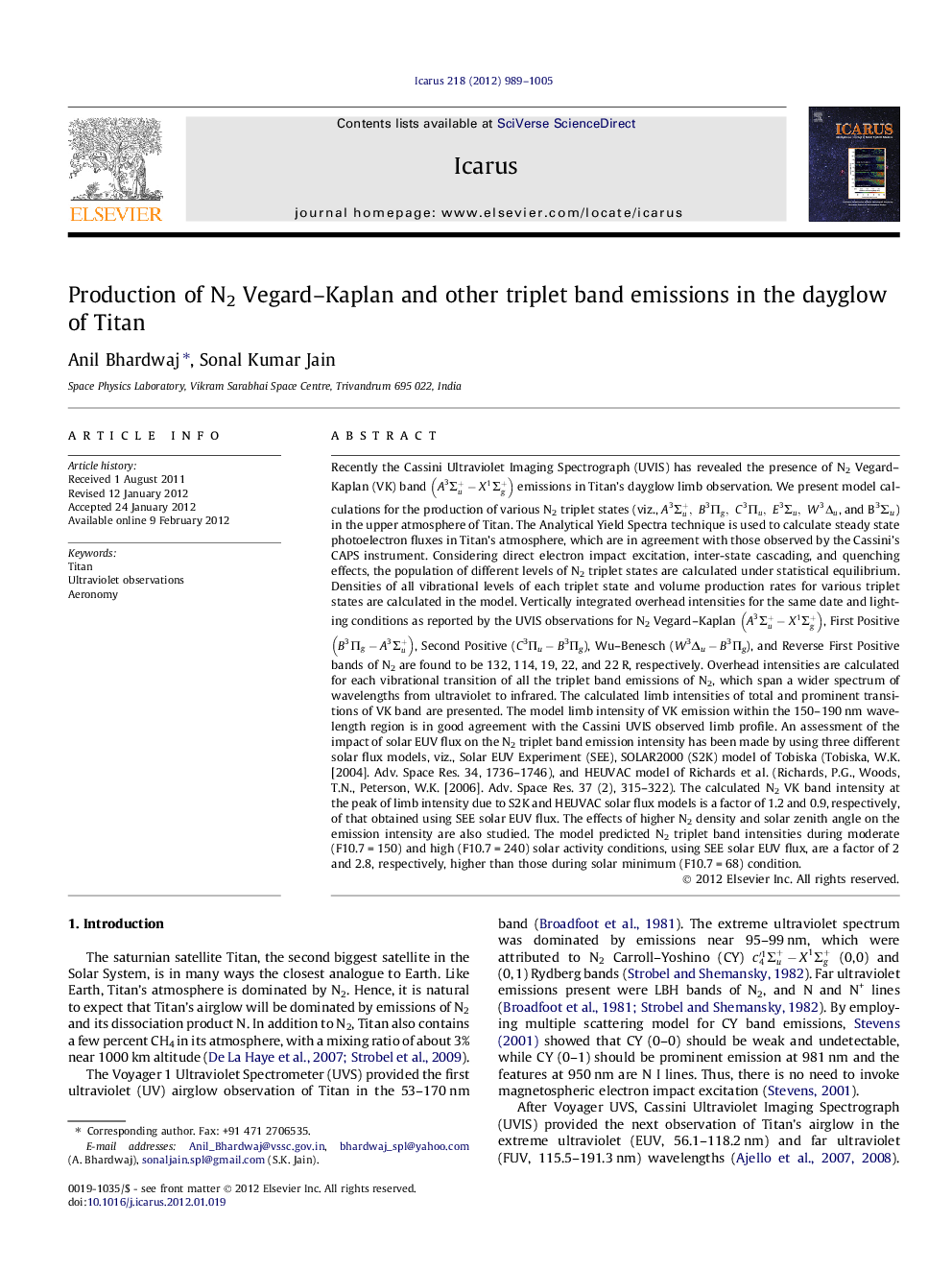| Article ID | Journal | Published Year | Pages | File Type |
|---|---|---|---|---|
| 1773662 | Icarus | 2012 | 17 Pages |
Recently the Cassini Ultraviolet Imaging Spectrograph (UVIS) has revealed the presence of N2 Vegard–Kaplan (VK) band A3Σu+-X1Σg+ emissions in Titan’s dayglow limb observation. We present model calculations for the production of various N2 triplet states (viz., A3Σu+,B3Πg,C3Πu,E3Σu,W3Δu, and B3Σu ) in the upper atmosphere of Titan. The Analytical Yield Spectra technique is used to calculate steady state photoelectron fluxes in Titan’s atmosphere, which are in agreement with those observed by the Cassini’s CAPS instrument. Considering direct electron impact excitation, inter-state cascading, and quenching effects, the population of different levels of N2 triplet states are calculated under statistical equilibrium. Densities of all vibrational levels of each triplet state and volume production rates for various triplet states are calculated in the model. Vertically integrated overhead intensities for the same date and lighting conditions as reported by the UVIS observations for N2 Vegard–Kaplan A3Σu+-X1Σg+, First Positive B3Πg-A3Σu+, Second Positive (C3Πu − B3Πg), Wu–Benesch (W3Δu − B3Πg), and Reverse First Positive bands of N2 are found to be 132, 114, 19, 22, and 22 R, respectively. Overhead intensities are calculated for each vibrational transition of all the triplet band emissions of N2, which span a wider spectrum of wavelengths from ultraviolet to infrared. The calculated limb intensities of total and prominent transitions of VK band are presented. The model limb intensity of VK emission within the 150–190 nm wavelength region is in good agreement with the Cassini UVIS observed limb profile. An assessment of the impact of solar EUV flux on the N2 triplet band emission intensity has been made by using three different solar flux models, viz., Solar EUV Experiment (SEE), SOLAR2000 (S2K) model of Tobiska (Tobiska, W.K. [2004]. Adv. Space Res. 34, 1736–1746), and HEUVAC model of Richards et al. (Richards, P.G., Woods, T.N., Peterson, W.K. [2006]. Adv. Space Res. 37 (2), 315–322). The calculated N2 VK band intensity at the peak of limb intensity due to S2K and HEUVAC solar flux models is a factor of 1.2 and 0.9, respectively, of that obtained using SEE solar EUV flux. The effects of higher N2 density and solar zenith angle on the emission intensity are also studied. The model predicted N2 triplet band intensities during moderate (F10.7 = 150) and high (F10.7 = 240) solar activity conditions, using SEE solar EUV flux, are a factor of 2 and 2.8, respectively, higher than those during solar minimum (F10.7 = 68) condition.
► Detailed model calculations of N2 triplet band emissions in Titan’s dayglow. ► Calculated photoelectron flux agrees with the Cassini-CAPS measurements. ► Model intensity of N2 VK band agrees well with the Cassini–UVIS observations. ► The impact of three solar EUV models on N2 triplet band emissions is evaluated. ► The effect of solar cycle on the N2 triplet band emission intensities is studied.
